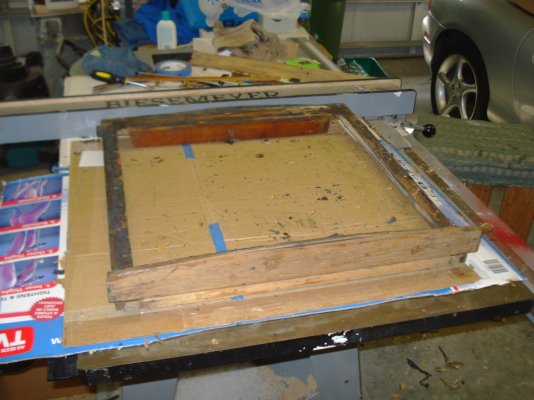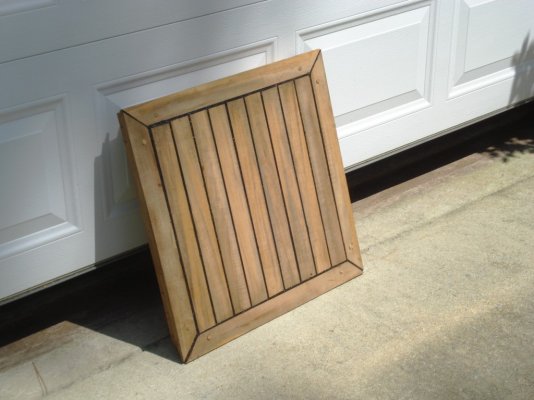ARoss
Guru
- Joined
- Nov 17, 2007
- Messages
- 637
- Vessel Name
- My Yuki
- Vessel Make
- 1973 Marine Trader 34
I finally got around to looking at the aft hatch slider on my MT 34.* When the sunbrella cover was off, it* seemed to leak a little... ** ** Seems a PO decided to install a piece of ...(plexiglass? ) * semi-opaque cover in a rebuild of the hatch cover.** About 40 little screws in the plastic top guaranteed it'd leak sooner or later, and now I have found a real mess.. under the plastic top was plywood that had turned to* mush...** the only salvageable pieces are the the original teak frame components.
I'd like to* rebuild and cover that* frame with some kind of solid* WATERPROOF* solid panel to which I can attach teak strips* strips** eg..* 1/4"* x 2"* with epoxy or something.


Questions:**
The pics show what I've got, and where I'd like to be.**
!.Suggestions for the replacement base panel?* The PO must have used Home Depot interior 3/4" plywood -- it was almost totally disintegrated.**
2. When I attach the teak strips to the* base* , what adhesive will work best, and since I'd like to have "caulk"* between the strips,* what's the recommended material?* Black 5200?
thanks for input.
I'd like to* rebuild and cover that* frame with some kind of solid* WATERPROOF* solid panel to which I can attach teak strips* strips** eg..* 1/4"* x 2"* with epoxy or something.
Questions:**
The pics show what I've got, and where I'd like to be.**
!.Suggestions for the replacement base panel?* The PO must have used Home Depot interior 3/4" plywood -- it was almost totally disintegrated.**
2. When I attach the teak strips to the* base* , what adhesive will work best, and since I'd like to have "caulk"* between the strips,* what's the recommended material?* Black 5200?
thanks for input.


